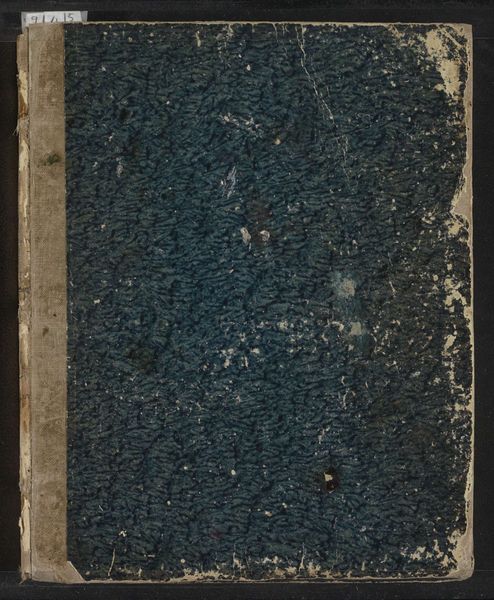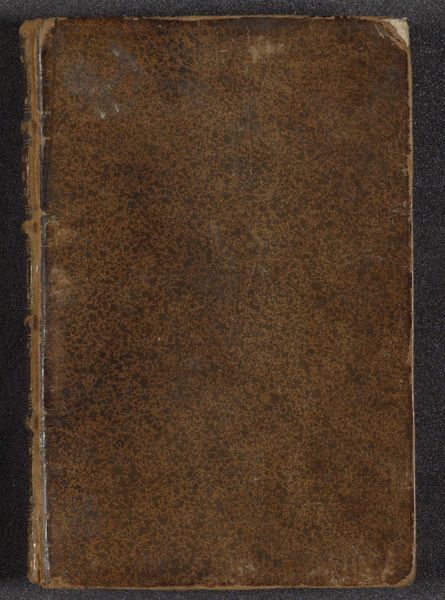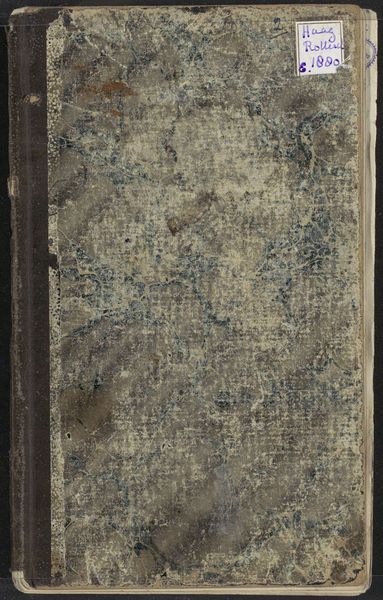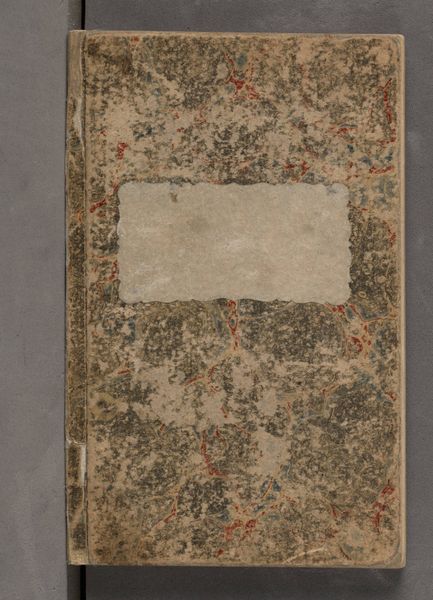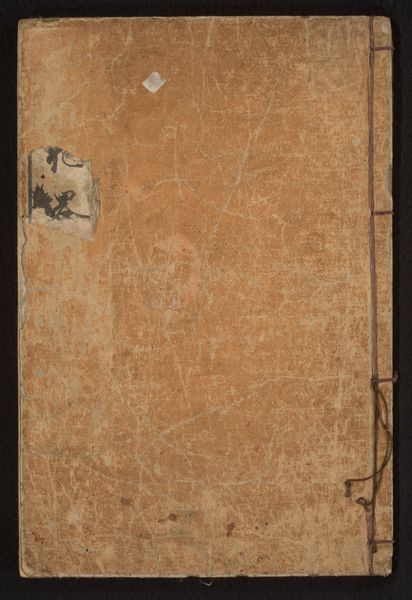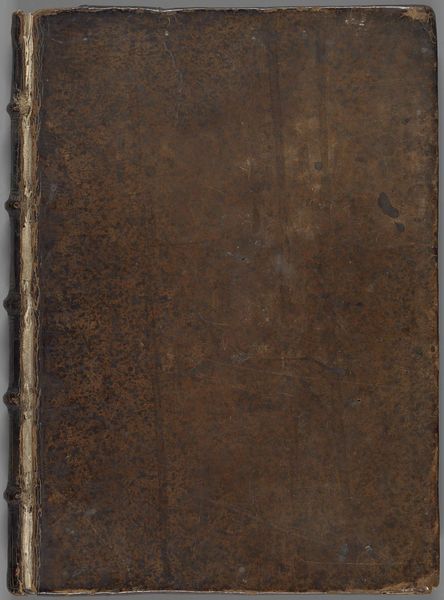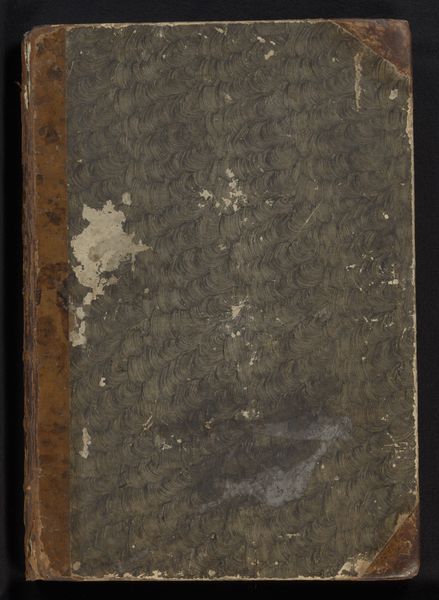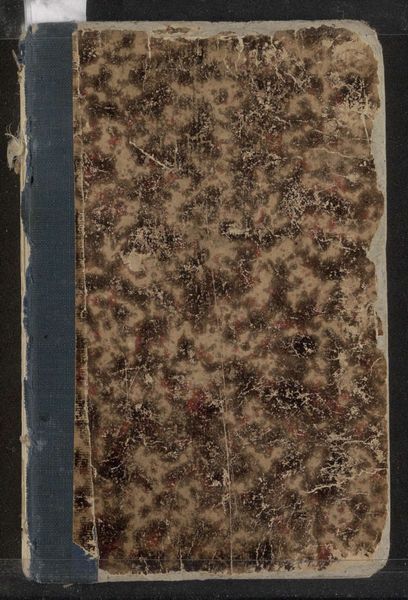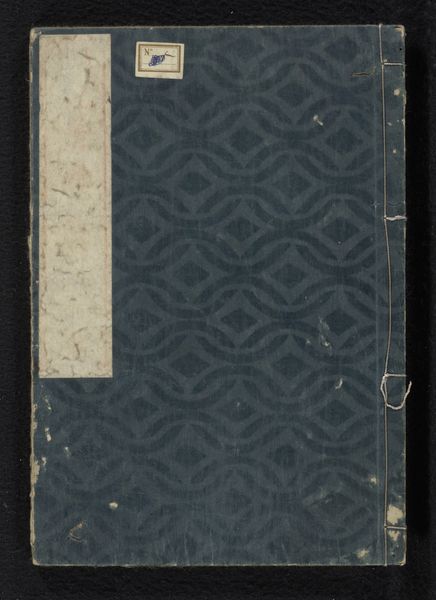
drawing, mixed-media, paper
#
drawing
#
mixed-media
#
paper
#
mixed media
#
watercolor
Dimensions: height 502 mm, width 333 mm, thickness 19 mm, width 655 mm
Copyright: Rijks Museum: Open Domain
Curator: The artwork we're looking at is a sketchbook titled "Schetsboek met 44 bladen" by Johannes Christiaan Schotel, dating from 1797 to 1838. It is held at the Rijksmuseum and features a variety of media including drawing, mixed media and watercolor on paper. Editor: Immediately, I’m struck by the tactile quality of the cover, despite it being a digital image. The swirling pattern and visible wear hint at its age and the many hands that may have handled it. Curator: Indeed. Schotel lived through a period of immense social upheaval. His work is steeped in the maritime tradition, but it also reflects a growing awareness of the power dynamics inherent in Dutch sea trade and naval presence, specifically in relation to marginalized communities, for whom their labor fuelled global economics at the time. This little book offers insights into his own process of recording and reacting to the changes he saw around him. Editor: The cover acts almost like a chaotic microcosm, those small circles fight for space and definition in ways similar to what would be unfolding on his pages through nautical illustration, maybe in preparatory sketches before final compositions. Are there visible anchors? Symbolic gestures about Dutch power perhaps? Curator: Absolutely. We have depictions of ships both in grand form and wrecked states. Consider his possible ambivalence of documenting scenes celebrating Dutch maritime prowess with knowledge of what, or rather whose efforts and resources these victories were made possible. It invites considerations around contemporary discussions on colonial legacy and artistic responsibility. Editor: It's compelling how such a small, intimate object, a humble sketchbook, can serve as a lens for such large questions. There's something about its damaged state too—the chipped corners, the fading—it underscores that history isn't a pristine, easily digestible narrative. Curator: I agree. The physical fragility is potent, serving as a mirror for larger historical context; an echo of past narratives, their construction, but also the inevitability of revision. The drawings inside show meticulous technique yet simultaneously capture fleeting moments—sea life, vessels battling rough waters. These could even have served as reference material for Schotel’s major pieces, an insight to an artist’s world building. Editor: Yes, even from the exterior, and as an object in itself, it provides a tangible link to his era and methods. It's a compelling study. Curator: A quiet monument that speaks volumes on society, artistry, legacy and interpretation.
Comments
No comments
Be the first to comment and join the conversation on the ultimate creative platform.
